Satellite communication networks can adopt different architectural configurations based on the requirements and objectives of the system. Common network topologies include point-to-point, star, and mesh topologies. The choice of architecture and network topology depends on factors such as coverage requirements, data throughput, latency, scalability, and cost considerations. Different applications and use cases require specific architectures to meet their unique communication needs.
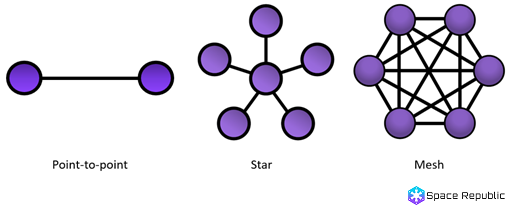
Network topology
The most used architecture is the star topology, in which all communication links are routed through a central hub, simplifying network management and control. The gateway and Mission Control Centre (MCC) is acting as the centre of the star and performs all the switching and routing tasks.
The user terminals on the ground are directly connected to the gateway station via the satellite. The terminals can be in different beams. For the communication of two terminals, which are part of the same satellite network, the link is established to the gateway and back to the second terminal by a double hop link:
Terminal 1 -> Satellite -> Gateway
and
Gateway -> Satellite -> Terminal 2
Point-to-Point (P2P) topology, on the other hand, creates a direct communication link between the user terminals of the same satellite network, offering increased robustness and privacy. P2P architecture offers a lower latency than a star topology with a gateway, as only one hop between terminal 1 and terminal 2 is needed. This topology is mainly used by companies or military with a need for increased privacy or security of the connection. This topology does not foresee external connectivity such as the access to the Internet.
In this topology, the satellite needs to process on board the routing of the signals.
In a mesh topology, multiple terminals are interconnected to form a network where each user terminal satellite can communicate with other terminals. This architecture enables more robust and flexible communication paths. The mesh topology is the topology of choice for constellations of communication satellites.
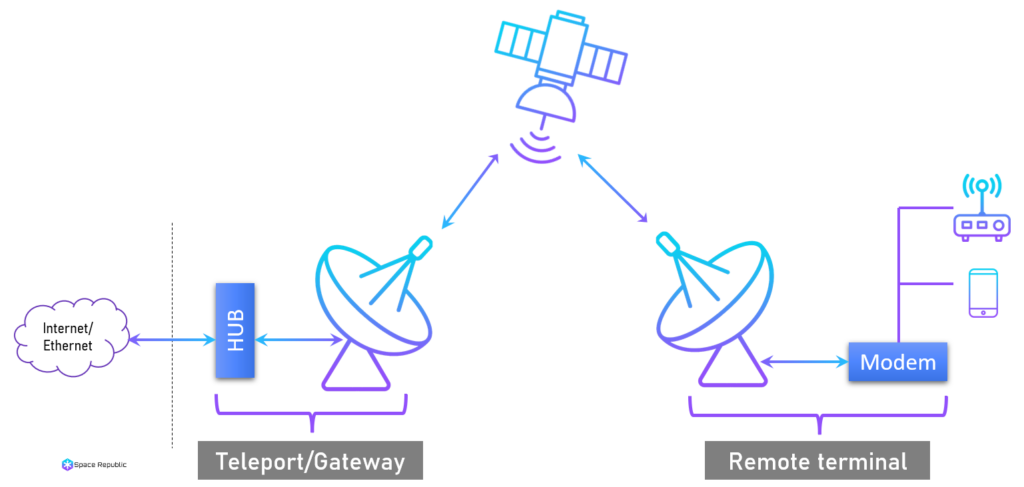
Point-to-Point communication
Point-to-Multipoint communication can include a hub to route the signals to the different user terminals, or the satellite is processing on board the routing.
For the Point-to-Multipoint communication with a hub, the network can operate all topologies (point-to-point, star, mesh). Users in beam A and beam B can communicate between each other via the hub with a double hop. The Gateway/Teleport site must be in one of the antenna beams of the satellite.
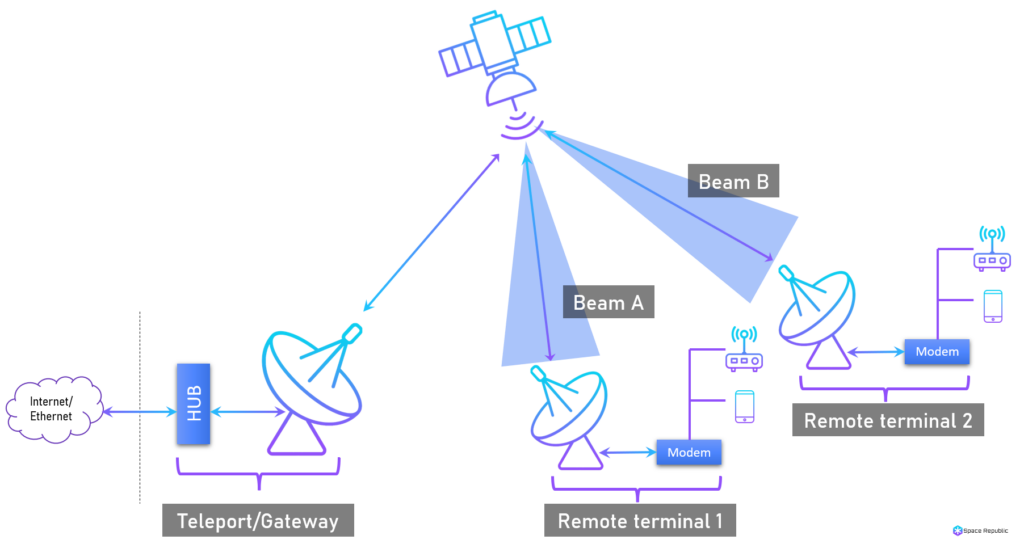
Point-to-Multipoint communication
For the Point-to-Multipoint communication without a hub, the satellite is only connected to a controller on the ground and can operate a mesh network. Users in different beams can communicate between each other directly in a single hop. The Gateway/Teleport site must be in one of the beams of the satellite antenna.
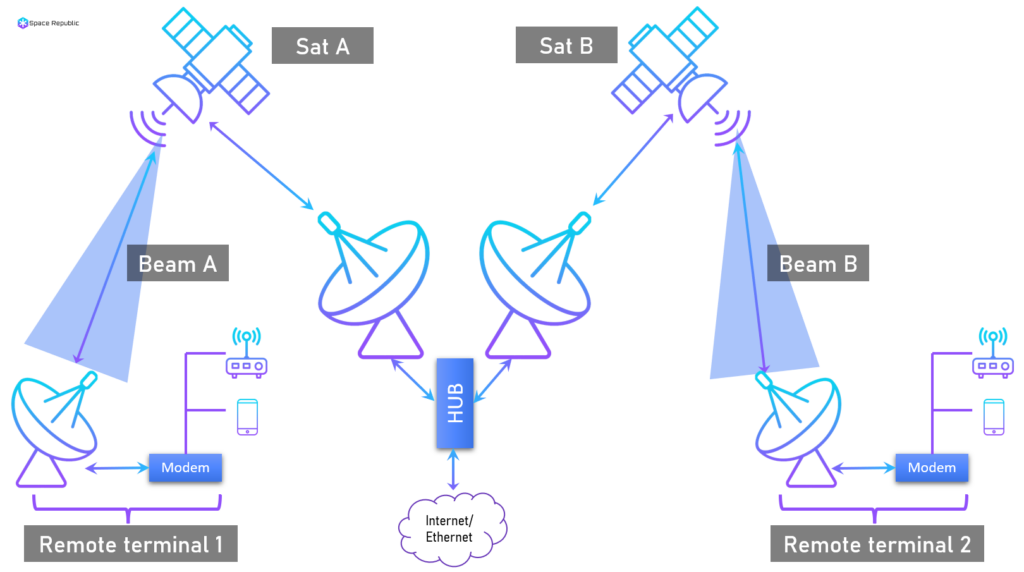
Point-to-Multipoint communication via multiple satellites
For the Point-to-Multipoint communication via multiple satellites, one hub can connect several satellites and a single network is established between the satellites. This enables communication between the users of one satellite with the users connected to another satellite. In this network, all three topologies can be operated. The Gateway/Teleport site must be located where links to both satellites are possible.
The architecture of communication networks:
The architecture of a satellite communication network facilitates the communication between ground-based users via one or multiple satellites and is typically divided into the four segments: the space segment, the ground segment, the user segment as well as the terrestrial network.
Satellite network architecture
The space segment contains the satellite fleet and is the centerpiece of the communication network. It is equipped with transponders, antennas, and other subsystems necessary for signal reception, processing, and retransmission. The satellite acts as a relay station, receiving signals from user terminals, amplifying them, and retransmitting them back to the ground. Satellites can be positioned in different orbits, depending on the coverage and performance requirements of the network.
The ground segment includes the Earth stations and operational centres that monitor, control, and manage the satellite operations. It includes mission control centers, telemetry tracking and control stations, and network management systems. The ground control system is responsible for satellite orbit determination, payload control, power management, software updates, and overall system health monitoring.
The Network Operations Center (NOC) serves as the central hub for managing the satellite communication network. It handles tasks such as network monitoring, troubleshooting, performance optimization, and service provisioning. The NOC ensures the smooth operation of the network, including capacity planning, resource allocation, and traffic management.
The terrestrial network infrastructure comprises the components that enable data transmission between the satellite network and the terrestrial network such as the Internet or cellular networks. It includes terrestrial networks and internet gateways and facilitates connectivity to external networks, integrating with existing communication protocols and standards, and ensuring interoperability with other communication systems.
The user segment consists of the user terminals, which are the devices used by end-users to communicate with the satellite. These terminals can be fixed, such as satellite TV receivers or internet modems, or mobile, such as satellite phones or terminals on moving vehicles. User terminals transmit and receive signals to establish communication links with the satellite.

Comments